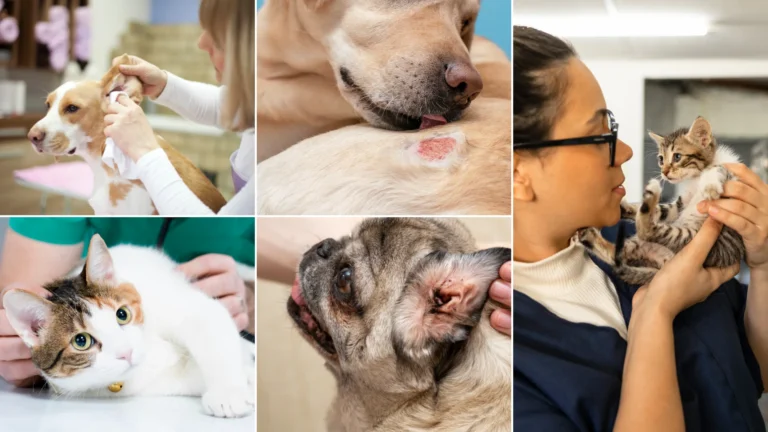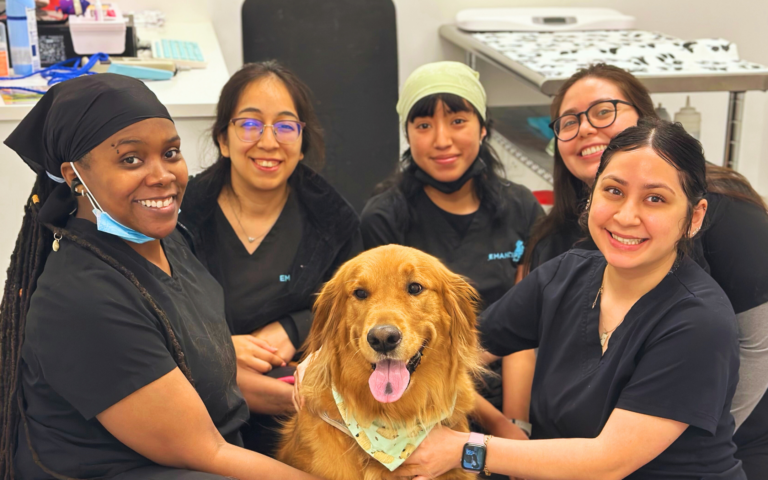Dr. Mule, Senior Medical Director at Emancipet and Dr. Molina, Medical Director at Firehouse joined forces to give their top tips on preventing your pet from getting lost. This is VetEd with Firehouse Animal Health Centers.
What should I do if my pet goes missing?
Share your pet’s picture. Post a clear recent photo on social media and neighborhood groups with your pet’s description. When you’re posting signs around the neighborhood, make sure you’re using bright signs with big, bold fonts.
Contact vets and local shelters. Local vets can scan pets for microchip and you can ask the shelters if they have seen a pet there with your pet description. Also, don’t forget to
Use your city’s resources. You can file a lost pet report and share the pet photo and description.
Organize a search party. Get help from family and friends. You can bring treats and toys, knock on doors and call your pet’s name.
Notify the microchip company. Tell the microchip company to issue an alert and use their resources to find your pet.
What are the best methods to prevent your pet from getting lost?
One of the best prevention methods is to create a safe environment for your pet. Keep your pets indoors with the doors locked. You can also use fans, the radio, the TV to distract your pet or block out some noise. Also, contact your veterinarian to see what options they have available for your pet regarding anti anxiety medications or over the counter products that can help your pet with anxiety.
Consider boarding. If you are concerned about leaving your pet alone, consider boarding your pet to prevent any destructive behaviors. On holidays such as July 4th or New Year’s, it is especially important to keep your pet safe at home. It’s also very important that the microchip information of your pet is up to date.
What is a microchip and why are they important?
Microchips are a form of pet identification that can help reunite lost pets with their owners. A microchip is a small device about the size of a grain of rice that is inserted under the skin near the scruff of a dog or cat’s neck. When scanned by a specific type of reader, the microchip emits a radio signal that translates to a specific number that is associated with that pet and that microchip.
When entered in a database online, that number can be used to find out that pet’s owner’s contact information and help reunite them. Microchip companies do not give out your personal information. Instead, when someone calls to report a found pet, the microchip company will reach out to you directly to help reunite you with your animal.
It’s important to know that a microchip is not a GPS tracker like a tile or an air tag, and that someone has to find your pet and scan them in order for you to be contacted and reunited.
What is the microchip insertion process like?
The process is very simple. First, the pet is scanned to make sure that they don’t already have a microchip to avoid confusion by adding a second one.
Then, we scan the microchip in its packaging to make sure that it works. It’s pretty rare, but sometimes a defective chip will be shipped to a vet clinic, and we don’t want to put a chip in your pet if it doesn’t work. Once these two confirmation steps are completed, the chip is inserted in the scruff of your pet’s neck while they are gently restrained and may be distracted with some treats or a toy.
Although it’s a larger needle than you use for vaccines, most pets experience only minimal discomfort when their chip is inserted. However, if your pet is especially wiggly or difficult to restrain, your vet may recommend doing the microchip when they are already under anesthesia for a procedure like a spay or a neuter.
After it’s inserted, the pet is scanned with the microchip reader to make sure that the chip is still there and is working. The vet or technician will also examine the pet’s neck to make sure that the chip isn’t sticking out through the skin.
How do I register my microchip?
Chips can be registered by making an account with the company that distributed your chip. Sometimes these companies offer additional services, like specific types of alerts or messaging for an extra fee. However, registering your contact information is always free.
How do I update my microchip?
Most registries allow you to make an account with a username and password. By logging into their online portal, you can change your contact information so that your pet can still be reunited with you if you move.
What should I do if I find a stray pet?
Call your local veterinarian and the local shelter. Share the pet’s information and description in neighborhood groups. Veterinarians see so many good samaritans who bring found pets and ask vet staff to scan them for a microchip.
Remember that even if you take all of the steps to prevent your pet from getting lost, accidents happen and one of the best things that you can do is put a microchip in your pet with your contact information. This way if they do get away, you’ll be reunited.




